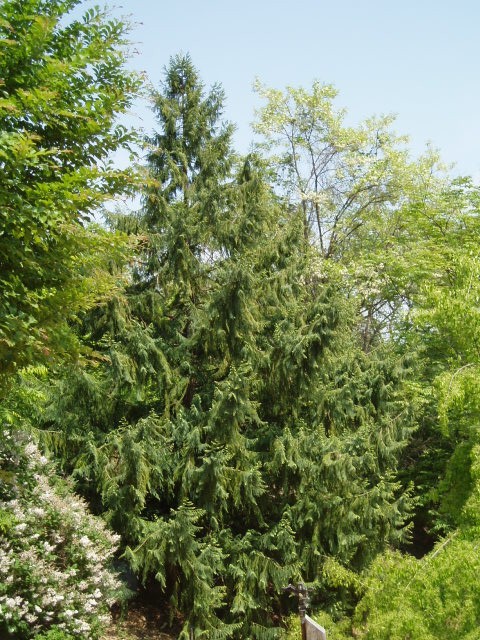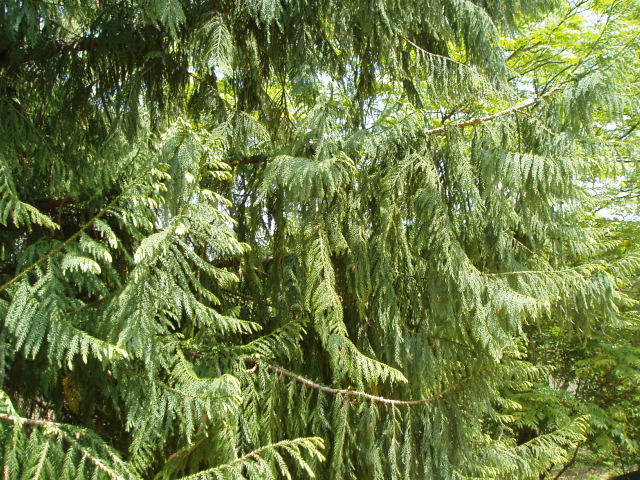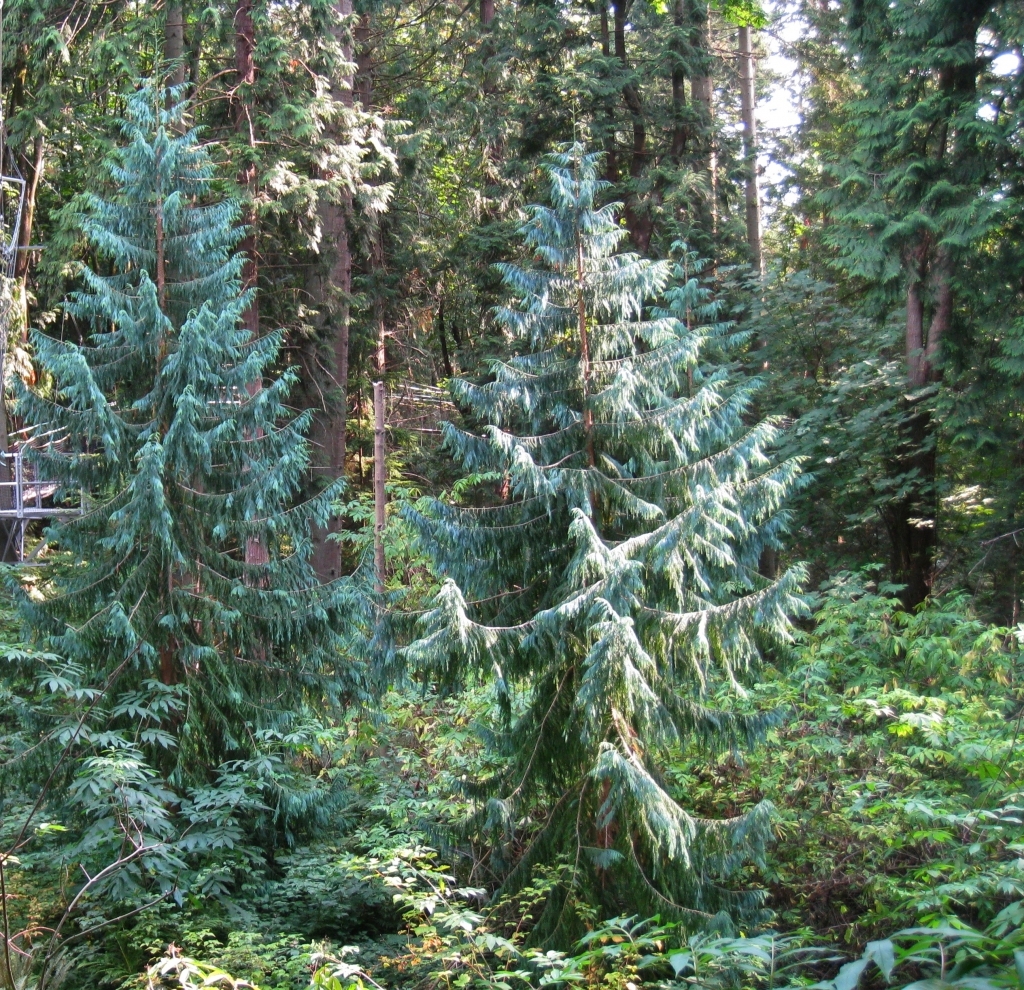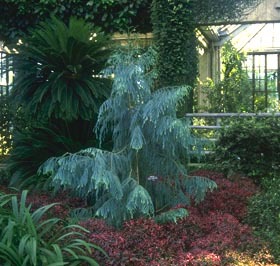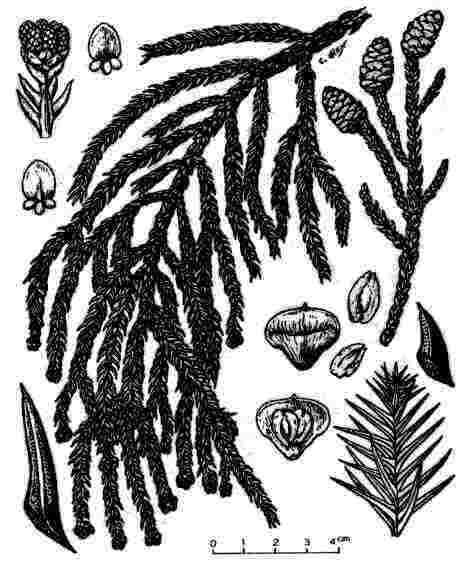
Taiwania cryptomerioides, as described in 1906 byBunzŠ Hayata, in Journal of the Linnean Society, Botany vol. 37, is commonly known as taiwania, or Chinese coffin tree. In the Latin language, the species name cryptomerioides, literally translates into "resembling Cryptomeria." Young specimens indeed recall Cryptomeria (Japanese cedar).
Description. Chinese coffin tree is an evergreen, coniferous species of tree that grows to mature heights of 250 feet (80 m) tall and with a trunk up to 12 feet (4 m) in diameter above buttressed base.
Records
Distribution. This species is native to Myanmar; Vietnam - Lao Cai; and Taiwan - the western slopes of Mt. Morrison. It occurs at elevations of 1,650 to 9,200 feet (500 - 2,800 m) above sea level elevation in coniferous, broad-leaved, or mixed evergreen valley forests on acid, red, or brown soils in warm or warm temperate regions with high summer and autumn rainfall but drier winters, usually scattered and associated with Chamaecyparis formosensis, C. obtusa var. formosana, Cunninghamia lanceolata, Pinus wallichiana, or Tsuga dumosa, but sometimes forming pure stands.
Hardy to USDA Zone 7 - cold hardiness limit between 0° and 10°F (-17.7° and -12.2°C); and well suited for culture in semi-tropical climate zones.
In 1918 E. Wilson sent 4 plants to the Arnold Arboretum. To this day, it is exceedingly rare; virtually never seen in commerce.
